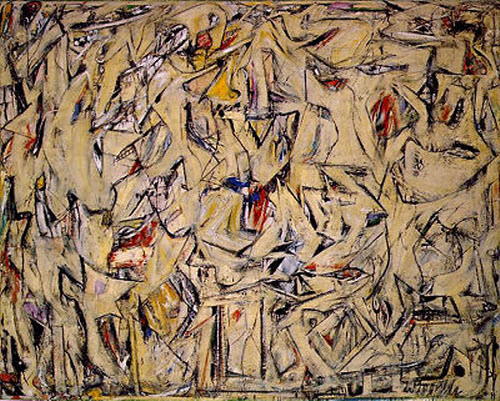Interest in the Museum of Modern Art’s fall blockbuster “De Kooning: A Retrospective” (September 18, 2011–January 9, 2012) is so high that legendary MoMA curator emeritus John Elderfield was recently stopped in the grocery store by a stranger who wanted to know if Excavation would be part of the show. The answer was yes–the 1950 landmark painting is on a rare loan from the Art Institute of Chicago for the most comprehensive exhibition ever (beginning September 18) of Willem de Kooning’s work. With paintings, sculptures, and drawings spanning 70 years, the retrospective will bring the artist’s protean talent home. Says Elderfield: “He didn’t develop a signature style and stick with it–he developed one and then got rid of it, over and over.”
Of course, if you can’t make it to New York this fall, or want a taste before you see his work in person, then we highly recommend the hardcover book De Kooning: A Retrospective ($47.25) that is being published in conjunction with the first large-scale, multi-medium, posthumous retrospective of Willem de Kooning’s career. The book offers an unparalleled opportunity to appreciate the development of the artist’s work as it unfolded over nearly seven decades, beginning with his early academic works, made in Holland before he moved to the United States in 1926, and concluding with his final, sparely abstract paintings of the late 1980s. The volume presents approximately 200 paintings, sculptures, drawings and prints, covering the full diversity of de Kooning’s art and placing his many masterpieces in the context of a complex and fascinating pictorial practice. An introductory essay by John Elderfield, MoMA’s Chief Curator Emeritus of Painting and Sculpture, provides an in-depth exploration of de Kooning’s development, context and sources, theory of art and working methods. Sections devoted to particular areas of the artist’s oeuvre provide an illustrated chronology of the period and a brief introduction, as well as detailed entries on groups of works. With lavish, full-color documentation, this landmark publication is the most complete account of de Kooning’s artistic career to date.
Willem de Kooning was born in Rotterdam, The Netherlands in 1904, and moved to the United States in 1926. His early figurative painting slowly gained attention, and his black-and-white abstractions of the late 1940s made him a leader among the New York Abstract Expressionists; but the early 1950s Woman paintings made him famous for the violence of their depiction. De Kooning moved to Long Island in 1963, working in both abstract and figurative styles through the 1980s. He died in 1997.




